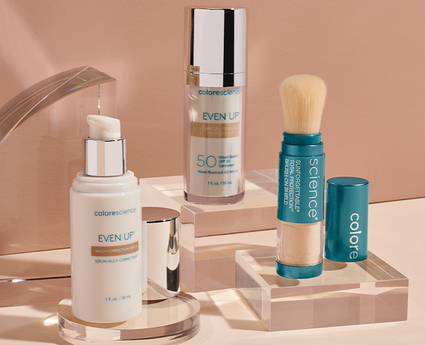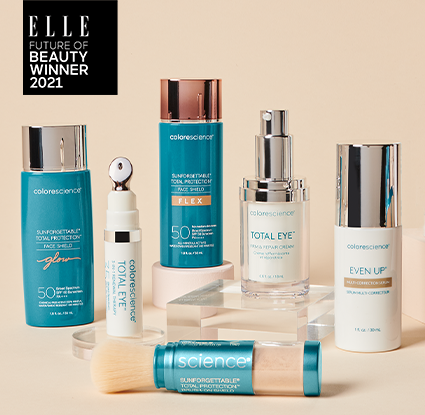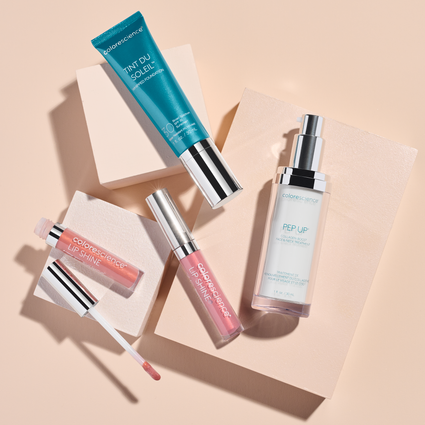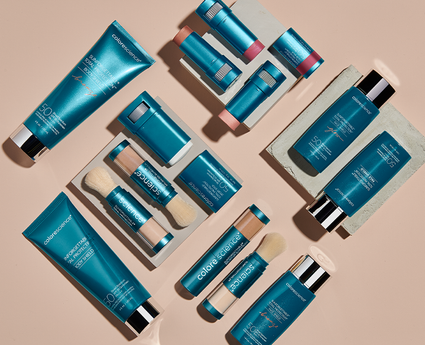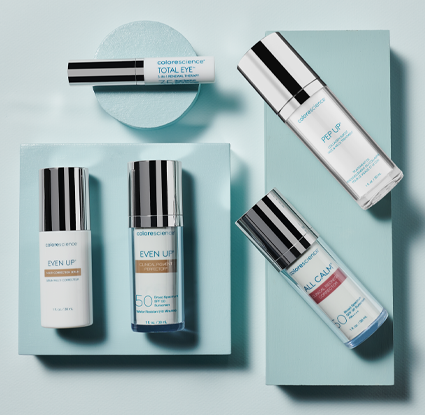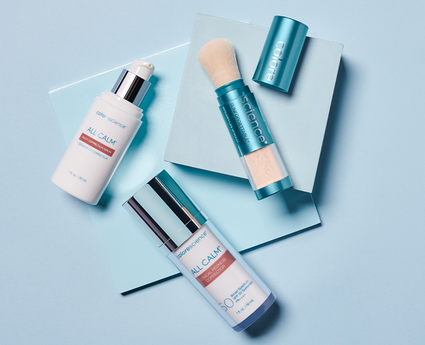7 Effects of Not Wearing Sunscreen
We’ve all heard it over and over you need to wear sunscreen to protect yourself. But is it really that crucial? What happens if you get out of the habit or never started to begin with? Turns out, a lot can happen.
It’s not just worrying about the short--term discomfort of a sunburn. The effects of not wearing sunscreen can actually be pretty serious. Unprotected sun exposure can have a lasting impact on both your skin and your overall health.
Learn more about the potential consequences of not wearing sunscreen and how you can best protect yourself. Use the links below or keep reading for everything you need to know.
- Are There Negative Effects of Now Wearing Sunscreen?
- Effects of Not Wearing Sunscreen
- 4 Tips for Better Sunscreen Use
Are There Negative Effects of Now Wearing Sunscreen?
Yes. In the short term, you might develop a serious sunburn. If the burn is bad enough you might even get blisters that could scar.
The risks of not wearing sunscreen don’t end there; it can lead to long-term consequences. For example, persistent sun exposure without sunscreen can cause you to age prematurely, leading to wrinkles, fine lines, and even skin discoloration. If you experience repeated sunburns over a number of years, you could also increase your risk of developing skin cancer.
We’ll cover more about not wearing sunscreen and its effects below.

Effects of Not Wearing Sunscreen
Some of the biggest consequences of not wearing sunscreen include:
1. Skin Cancer
If you go outside without protection, you increase your risk of skin cancer. This is one of the more serious concerns of sun exposure. There are a variety of skin cancers you might develop. For example, you could develop basal cell carcinoma, or you could get melanoma.
Additionally, skin cancer can spread throughout the rest of your body, metastasizing to your bones, liver, and kidneys. If you want to reduce your chances of developing skin cancer, you need to wear strong sunscreen, such as mineral sunscreen.

2. Premature Aging
Repeated sun exposure could also lead to premature aging. Specifically, if you don't protect yourself while outside, you could develop lines, wrinkles, blemishes, and spots that could make you appear older than you actually are.This is especially true for areas like your face and chest that are most exposed to the sun’s harmful rays.
If you want to prevent premature aging, wearing sunscreen is important. Broad-spectrum sunscreen can protect you from both UVA and UVB rays, helping to prevent wrinkles, age spots, and more.
3. Sun Burns
Of course, one of the most common consequences of not wearing sunscreen is getting sunburns. But did you know that in as little as 20 to 30 minutes you could start to burn? Like regular burns, sunburns can range in severity. A particularly severe sunburn can also lead to blisters. Remember that repeated sunburns can lead to long-term health risks.
There are a few specific signs that you may have experienced a sunburn. They include red skin, hypersensitivity to touch, and persistent discomfort. And, If you have sun allergies, the effects of a sunburn on your skin could be even worse.

4. Skin Discoloration
If you don't wear sunscreen, you also increase your chances of developing skin discoloration. Repeated sun exposure can lead to skin damage in the form of dark spots, sometimes referred to as age spots. This is because it increases melanin production.
Sometimes, this results in tanning of the areas that were exposed. However, on the other hand, there are some situations where persistent sun exposure could lead to uneven melanin production and lasting damage, which creates dark spots that can be difficult to get rid of.
5. Dry, Leathery Skin
Repeated exposure to the sun can cause your skin to dry out, and when the UV rays interact with your skin cells, they can impact the appearance and growth of your body’s tissues.
Over time, your skin might become less elastic, which can cause your skin to look like tissue paper or leather. When your skin becomes dry, it can make you look older than you are.
6. Scarring
It’s also not unusual for repeated sun exposure to cause scars to become worse by making them darker and therefore, more visible. It might also compound issues of blistering and peeling, which can become scarred if not cared for properly.
That means that if you’ve been doing all the skin care treatments you need to clear up old acne scarring, you’re working against your own efforts. To both prevent and reduce scarring, make sure to wear sunscreen while you’re outside.
7. Immune System Suppression
Studies have shown that repeated exposure to UV rays can harm your immune system. UVA radiation can suppress your immune system by inhibiting antigen presentation, increasing the production of immunosuppressive cytokines, and generating regulatory cells that tamp down the immune system. If you don’t have a strong immune response, you may leave your body susceptible to viruses and bacteria, increasing your chances of developing an infection.
These are just a few of the many potential impacts of repeated exposure to UV radiation and essential reasons to always wear sunscreen when in the sun.
4 Tips for Better Sunscreen Use
If you want to maximize the benefits provided by sunscreen, there are a few important tips to keep in mind:
1. Wear Sunscreen Every Day
You want to wear sunscreen every day, even if it’s overcast since UV rays can still penetrate your skin. People of all ages, even kids, should use sunscreen. However, note that it’s generally recommended to wait until your baby is at least six months old before introducing sunscreen. In those first crucial months, make sure they’re covered while outdoors.

2. Choose the Right Type of Sunscreen
You need to make sure you choose the right sunscreen to protect your skin, but doing so can be a bit tricky if you don’t know what to look for. Here are some tips for doing that:
- Always look at the bottle to make sure it’s broad-spectrum sunscreen. That means it’s sunscreen that protects against both UVA and UVB rays.
- Check the SPF to make sure it’s SPF 30 or higher.
- Look at the ingredients list and make sure you are not using sunscreen that has a lot of harmful chemicals. If you aren't sure of what something is on the package, you should do a quick search to make sure it’s safe.
Because there are often chemicals in many sunscreens, many people are choosing to use mineral sunscreen, which includes natural ingredients and doesn’t run the risk of those chemicals possibly absorbing into your bloodstream.
Colorescience sunscreens are all made from safe, mineral ingredients, like our Sunforgettable® Total Protection™ Brush-On Shield SPF 50 that’s easy to apply. If you prefer a traditional liquid sunscreen, there’s also the Sunforgettable® Total Protection™ Face Shield Flex SPF 50.
3. Use Enough Sunscreen
When you are applying sunscreen to your body, you should be generous. Even missing a small part of your body could lead to a serious sunburn and other negative side effects.
You want to make sure to apply sunscreen to areas of the body that many people overlook. Some of the most common areas that people miss when applying sunscreen include:
- Eyelids and under eyes
- Ears
- Neck
- Tops of the feet
- Behind the knees
Make sure to apply sunscreen as evenly as possible when putting it on. If you find that certain spots are difficult to reach, consider asking someone else to apply sunscreen on your back for you.
If you are using a spray sunscreen, you must make sure you rub it in thoroughly. Don’t simply spray it in the general direction of your body—it often misses a lot of the skin and ends up in the air around you.
Note: You never want to get sunscreen in your eyes or mouth.

4. Always Reapply
Sunscreen is not something you put on once and then is good to go for the rest of the day. Reapplication is key to lasting protection from the sun. If you don’t reapply, you’re risking damaging your skin barrier and suffering the consequences of not wearing sunscreen that we covered earlier.
In general, you need to reapply sunscreen every 2 hours. However, you’ll need to reapply sunscreen more often than that if you are swimming or sweating a lot—every 40 to 80 minutes is generally recommended. If you expose yourself to water, make sure you use sunscreen that’s water resistant.
When you’re buying sunscreen it should say whether it’s water-resistant on the label and give instructions for reapplication so be sure to double-check how often it says to reapply for that specific formula.
Protect Yourself with Sunscreen Daily
It might be tempting to pass up the sunscreen when you’re in a hurry, but it’s a big risk to take. As you now know, there are a lot of negative effects of not wearing sunscreen that can impact you for the rest of your life. While it might seem hard to keep up with sunscreen application, it just takes building good habits.
Wearing sunscreen every day is easy with Colorescience. We’ve created quick-to-apply sunscreen options that are designed to take on the go, so you’re never without it. Create your perfect sun protection routine with our wide range of sunscreens and SPF-infused makeup. Shop our mineral sunscreen options for your face and body now to find the formula that works best for you!

